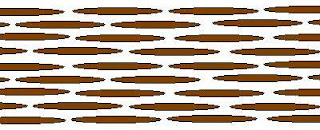What Mulch is, Types of Mulch, What Mulch Does, How to Mulch
Mulch is something covering your soil. When it is hot mulch keeps in moisture. When it’s cold mulch hold the heat in the soil. Light colored mulch reflects light back up to the plant leaves. Mulch can be anything from compost to living plants; to rocks (don’t use rocks for mulch).
Before planting in the early spring, when the soil is cold and wet from the winter, I remove all the mulch from the garden. This lets the sun shine directly on the soil, warming it and drying it out a little. This also starts hatching any insect or slug eggs in the soil. Cold nights and no food make it hard on the insects and they move on to find food and cover elsewhere. This also starts weed seeds germinating. Weeds can be removed easier without vegetable plants in the way or left in place as a green mulch so long as they don’t compete with vegetable plants for light or nutrients.
Plastic sheets can also be used in early spring as mulch. Clear plastic lets in light that turns to heat when it hits the soil, and then hold it in. Temperatures on a sunny day can reach 160* under the plastic mulch, killing just about everything in the top inch or two except the organisms that make compost. The plastic mulch should be removed when you plant the vegetables so you don’t cook the roots.
Once the vegetable plants are in, I start adding compost as mulch around the seedlings. This gives them extra nitrogen for leaf growth in their early stages. I clip any weeds growing in the mulch or any weeds over 2-3 inches tall.
Once the summer heat kicks in, I add a 2-3 inch layer of mulch over the entire garden bed. I use straw or dead leaves because it reflects some light back up to the plants. A thick enough layer should stop and weeds from growing through it and prevent the vegetables from touching the soil. This also keeps the sun from shinning directly on the soil, slowing evaporation. To continue adding compost I rake back the mulch add the compost around the plants and cover it back up.
In the late fall after I’ve removed my summer crops and put them in the compost pile, I turn the mulch in to the soil a little and cover with a thick layer of chopped leaves. This will hold in the heat for my winter crops or let the bed rest until spring.
Mulch is a valuable tool for the home gardener when used correctly. Mulch at the wrong time can create a haven for bugs leading to an explosive infestation or can cause the soil to be cold and wet when the plants want it warm and damp. No mulch at the wrong time can lead to rot and disease on the lower parts of the plant or hard dry soil. Proper use of mulch allows us to regulate soil moisture and temperature to create the best growing conditions for our vegetable plants.
Garden Mulch, Mulch for Vegetables, Green Mulch, Plastic Mulch, Mulch in the Garden



